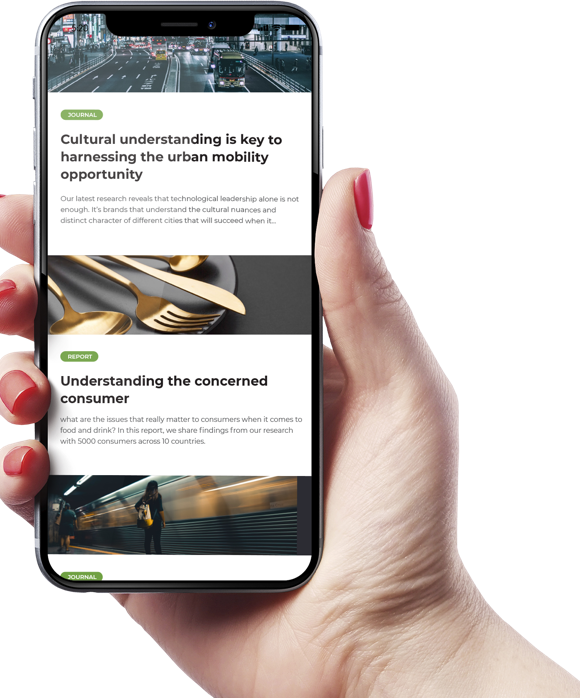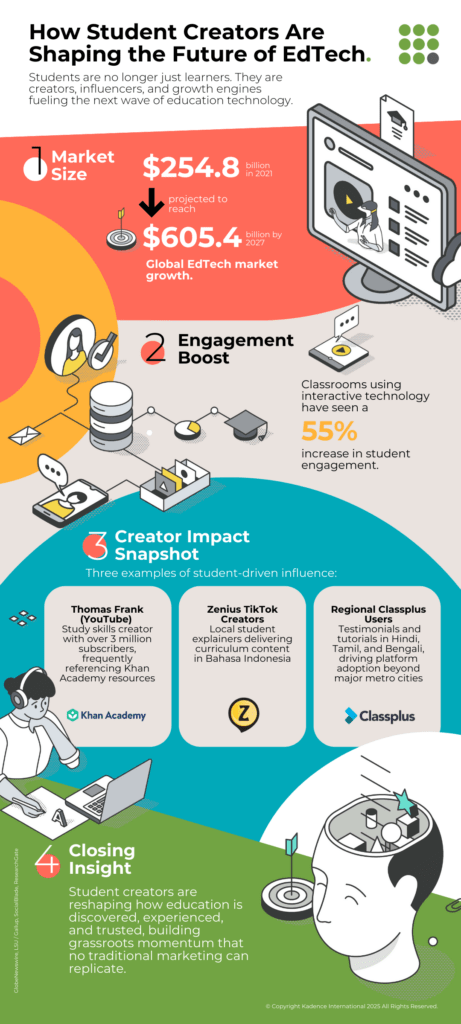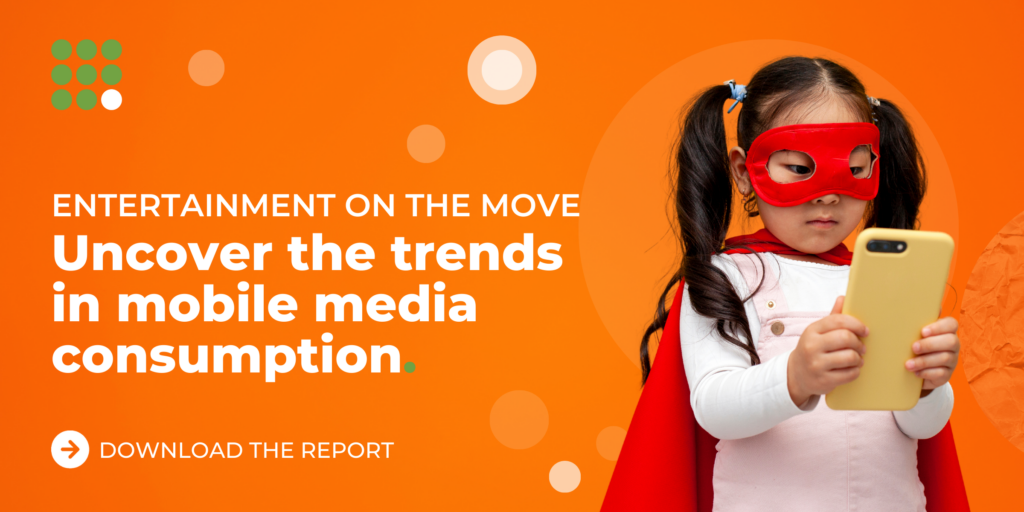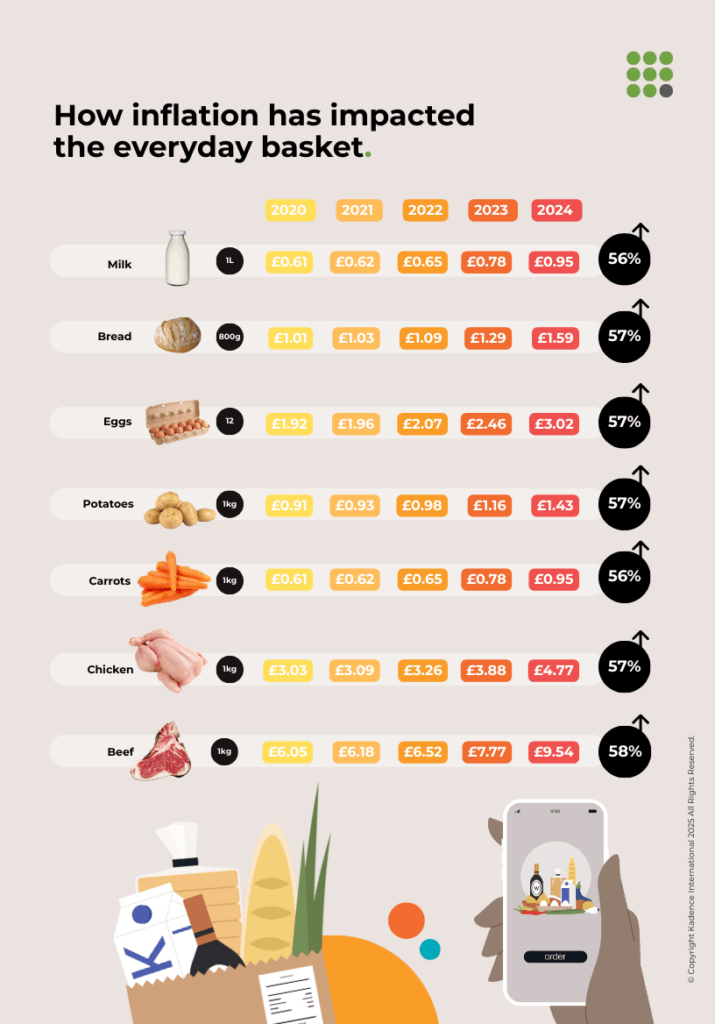Conducting online research in China is unlike anywhere else in the world.
With over 1.1 billion internet users in 2024, China accounts for over a fifth of the global online population. Nearly all of them, over 99%, access the internet via smartphones, making mobile-first behavior not just common but standard.
Researchers won’t find Google, Facebook, or YouTube. The Great Firewall blocks these platforms. Domestic giants like Baidu, WeChat, and Tmall stand in their place, which dominate search, social interaction, and e-commerce across every tier of Chinese society.
China’s digital economy is expanding with both speed and scale. According to the China Academy of Information and Communications Technology, it reached ¥50.2 trillion in 2024, accounting for nearly 40% of the country’s GDP. That growth has produced a tightly regulated, platform-driven ecosystem where almost every transaction and interaction is digitally mediated, and often monitored.
The implications for research professionals and brands entering China are clear: global tools and templates rarely apply. Access, compliance, and engagement strategies must be localized, legally sound, and platform-specific.
Understanding the Market Research Landscape in China
At first glance, China may appear to be a single, unified market. But researchers who’ve worked on the ground know better. The country’s vast geography, regional economic disparities, and fast-evolving digital behavior make it anything but monolithic.
One of the first challenges is the platform disconnect. Western tools and social platforms – standard in global research workflows – are largely inaccessible. Google Surveys, Meta’s ad platform, YouTube analytics, and even SurveyMonkey links can break or be blocked entirely. Instead, insights must be gathered through domestic platforms such as Wenjuanxing for surveys, WeChat for micro-panels and intercepts, or Douyin and Xiaohongshu for digital ethnography.
Understanding consumer behavior within these ecosystems requires fluency in China’s unwritten rules of digital life. These include the importance of influencer-led recommendations, the use of e-wallets and super apps, and the power of social commerce, where shopping is often embedded within live streams or chat threads. Research here doesn’t just measure attitudes or preferences; it often captures behavior in real time.
Then there are the legal and regulatory dynamics. China’s Personal Information Protection Law (PIPL), which came into effect in 2021, mirrors aspects of Europe’s GDPR but with stricter localization mandates. Researchers must store data onshore, obtain clear consent, and ensure complete transparency with respondents. Foreign firms conducting surveys without a local license risk heavy penalties or blocks.
Internet access itself is stratified. While national penetration hit over 76% in 2024, rural provinces and lower-tier cities still lag, especially in terms of speed, access to modern platforms, and digital literacy per CNNIC. A panel that works in Shenzhen might fail in Gansu.
In short, market research in China exists at the intersection of tight state oversight, massive digital adoption, and deeply localized behaviors. Without accounting for these dynamics, even well-funded research efforts can fall short, sometimes without realizing it.
Define Your Research Objectives and Localize Your Strategy
No matter how sophisticated the tools or how generous the budget, market research in China will fail if the objectives aren’t adapted to local realities. This is where many global teams stumble – by applying Western assumptions to an entirely different cultural and regulatory framework.
Consumer segmentation in China can’t rely on income bands or generational labels alone. Social status is fluid, regional identities matter, and values shift across provinces. A tier-2 city in the East may be more digitally mature than a tier-1 city in the interior. Brands that define their target groups too narrowly or generically risk missing how identity and aspiration play out in Chinese daily life.
Consumer behavior also looks different in a tightly surveilled digital space. Chinese consumers are more likely to self-censor, avoid specific topics, or express preferences indirectly. Questions that may seem standard in a US or UK survey about media consumption, personal values, or financial habits can backfire if not rephrased to account for local sensitivities. Cultural fluency matters not just in translation but also in tone, structure, and framing.
Even the method of recruitment can alter the reliability of insights. Research respondents in China tend to give more socially desirable answers, especially in group settings. This is rooted in the concept of “face” (mianzi), a powerful social dynamic that influences behavior in personal and public spheres. Without careful design, your questionnaire might gather politeness rather than truth.
A one-size-fits-all approach to research design is also problematic due to China’s vast geographic and economic divides. What resonates in Shanghai may fall flat in Chongqing, and what succeeds in digital-first Guangdong may underperform in slower-moving provincial markets.
Before any fieldwork begins, market research teams must:
- Clarify objectives in the context of China’s regulatory environment
- Rework segmentation models to include region, tier classification, and platform usage
- Pilot test surveys or interview guides to flag misinterpretations or mistrust
- Prepare for multiple iterations: localization is not a one-time edit
The most effective market research in China begins not with a script but with a reset. It discards assumptions and designs from the ground up, aligned to local behaviors, restrictions, and opportunities.
Choose the Right Market Research Methodologies
Choosing the correct market research methodology in China is a matter of access. With international research tools restricted or blocked, researchers must turn to local platforms, re-engineered workflows, and culturally calibrated approaches that work within China’s digital ecosystem.
Quantitative Research: Mobile, Embedded, and Localized
Online surveys remain a cornerstone of quantitative research, but success depends on domestic platforms. Tools like Wenjuanxing and Sojump are popular alternatives to SurveyMonkey and Qualtrics, offering full integration with WeChat, where Chinese consumers already live, shop, and communicate.
Incentives also look different. Instead of email vouchers, respondents are more likely to engage when rewards are offered via WeChat Pay or Alipay, and when surveys are designed for mobile-first navigation, short, vertical, and touch-friendly.
Researchers should also be cautious about using standard Likert scales or Western question phrasing. Translation is rarely enough. Questions like “How strongly do you agree with this statement?” may confuse or alienate respondents unfamiliar with abstract rating formats. Instead, behavioral prompts (“What do you usually do when…?”) often yield more honest responses.
Tencent’s survey tools account for over 60% of digital survey traffic in China, especially when embedded within WeChat mini-programs.
Source: Tencent internal data and industry reports
Qualitative Research: The Art of Listening Between the Lines
Focus groups, in-depth interviews, and ethnographic research still play a vital role in understanding Chinese consumers, but they require cultural dexterity. Participants may hesitate to share candid opinions in a group setting, especially if their answers could be seen as disloyal, impolite, or out of sync with others.
Skilled moderators trained in local dialects and non-verbal cues are essential. Many Chinese respondents may not openly contradict a brand or state dissatisfaction directly. What’s left unsaid, or said in euphemisms, can be just as meaningful as what’s spoken.
In rural areas and lower-tier cities, face-to-face intercept interviews or home visits may be more effective than digital channels, especially among older demographics with limited app literacy.
Example: A global FMCG brand could run taste tests for new snacks in Shanghai and Chengdu. While Shanghai participants might discuss flavor in marketing terms, Chengdu participants may reference family traditions and mealtime rituals. Both data sets will be valuable, but wildly different in tone and framing.
Platform-Based Research: Where Behavior Happens
Increasingly, behavior-based research on Chinese platforms is replacing self-reported data. Tools for social listening on Xiaohongshu, Douyin, and Weibo allow brands to track organic conversations, reviews, and influencer interactions in real time. This method offers rich, unfiltered insights only if researchers understand local slang, memes, and the fast-moving social codes that govern engagement.
Leveraging Live-Streaming and Digital Ethnography
An emerging trend in Chinese market research is the use of live-streaming interviews and digital ethnography. Researchers engage with participants through live video sessions, often via mobile screen sharing, to observe real-time decision-making processes during online shopping experiences. This approach provides insights into how consumers interact with algorithms, peer reviews, and promotional incentives.
Platforms like Douyin (the Chinese version of TikTok) and Kuaishou have popularized live-streaming commerce, where influencers showcase products and interact with viewers in real-time. Brands have adopted similar strategies for research purposes, allowing them to observe authentic consumer behaviors in natural settings.
For instance, during a live-streamed shopping session, a participant might discuss their thought process while choosing between products, revealing factors such as brand perception, price sensitivity, and the influence of peer recommendations. This method offers a richer, more nuanced understanding of consumer behavior compared to traditional surveys.
Recruit the Right Respondents
Getting the methodology right means little if the respondents don’t reflect the realities of China’s diverse consumer base. With a population that spans rural to hyper-urban, Gen Z to retirees, and everything in between, recruitment is one of the most critical and misunderstood steps in the research process.
Many international brands default to panels based in tier-1 cities like Beijing, Shanghai, or Shenzhen. While these metros offer easy access to digitally fluent, affluent consumers, they represent only a fraction of the Chinese population. Insights gathered here can skew overly optimistic or trend-forward, failing to reflect the slower adoption curves, different aspirations, and practical constraints of consumers in tier-2, 3, and 4 cities.
City-tier segmentation is often a more useful starting point than income or age alone. Lower-tier cities are home to emerging middle-class consumers with different brand loyalties, risk tolerances, and shopping rhythms. Mobile access may be high, but digital behavior often centers on group chats, community influencers, or price-comparison apps rather than impulse buys or brand storytelling.
Trust is another factor. Chinese respondents are often skeptical of unfamiliar research invitations, especially those that appear to come from foreign entities. Privacy concerns are amplified by growing public awareness of surveillance and data misuse. Clear disclosures, local branding, and appropriate incentives – preferably distributed via WeChat Pay or Alipay – go a long way in building credibility.
Here’s a simplified framework for how to think about respondent targeting:
| City Tier | Key Traits | Best-Suited Research Methods |
| Tier 1 | Digitally native, trend-sensitive | App-based surveys, UX testing, livestream ethnography |
| Tier 2 | Aspirational, price-conscious | Mobile ethnography, moderated interviews |
| Tier 3–4 | Family-driven, value-oriented | In-person intercepts, voice-recorded diaries, local moderators |
Recruitment also needs to reflect linguistic diversity. Mandarin may be the official language, but dialects like Cantonese, Shanghainese, or Hokkien dominate in certain regions, affecting not just how people speak but also how they think and respond. Ignoring these subtleties risks diluting the quality of the insights.
The goal isn’t just to find willing respondents. It’s to find the right mix of voices that reflect the layers of China’s consumer landscape – urban and rural, old and young, first-time buyers and category loyalists. That mix is what separates data from insight.
Choose the Right Local Partners
Conducting market research in China without the right local partner is like trying to navigate Beijing without a map or a VPN. Between strict data laws, platform-specific tools, and regional business norms, partnerships aren’t optional. They’re foundational.
Under China’s Personal Information Protection Law (PIPL) and related cybersecurity regulations, foreign companies conducting market research must work with licensed local entities. These partners ensure compliance with data localization rules, obtain the necessary permissions, and help navigate issues like respondent consent and secure data storage. Violating these protocols, even unintentionally, can result in blocked surveys, unusable data, or regulatory penalties.
But regulatory compliance is only part of the equation. The best local partners act as cultural interpreters, not just fieldwork executors. They know which platforms work in different regions. They can flag when a question falls flat or a concept may trigger political sensitivity. They often have pre-established panels or community connections that speed up recruitment without cutting corners.
Key traits to look for in a local research partner in China:
- Transparency in methodology, recruitment, and sample quality.
- Proven experience in your industry or category.
- Strong digital capabilities, including mobile-first survey design and platform integration.
- Multilingual moderation, especially for qualitative projects in regional markets.
- Regulatory fluency, with up-to-date understanding of evolving compliance requirements.
Let’s say a global home appliance brand selected a local agency based solely on cost. Midway through the project, the agency ran unlicensed online surveys, resulting in platform shutdowns and a complete loss of data. The brand had to restart fieldwork, this time with a vetted partner, which cost both time and credibility.
In China, partnerships are not transactional; they’re relational. A good local agency won’t just execute your brief; they’ll help shape it, localize it, and protect it from avoidable missteps.
Analyze the Data with Local Context in Mind
Collecting data in China is only half the challenge. The other half, often overlooked by global teams, is interpreting that data through the right cultural and behavioral lens. Without context, even clean, well-structured datasets can lead to misleading conclusions.
Start with the basics: consumer expression in China is nuanced. Respondents often avoid direct disagreement or criticism, especially in group settings or formal interviews. This isn’t dishonesty; it’s cultural etiquette. The concept of “saving face” (mianzi) shapes how people share opinions, particularly when discussing sensitive topics like personal finances, government policy, or dissatisfaction with brands. What’s unsaid, or expressed obliquely, can carry more weight than a direct answer.
Quantitative surveys can be similarly distorted if global benchmarks are applied too rigidly. A net promoter score (NPS), for example, may skew artificially high or low depending on how Chinese respondents interpret the scale. A score of 7 might indicate strong satisfaction, not neutrality, because many respondents avoid giving top marks unless truly exceptional service is perceived. Translating scales, expectations, and phrasing without local validation risks entirely misreading consumer sentiment.
Researchers must also consider regional variability. An insight that holds in Hangzhou may fall apart in Harbin. Differences in spending power, brand exposure, education levels, and even platform usage create subtle but significant variations in interpretation. Treating China as a single market often results in data that’s technically correct but strategically useless.
Then there’s the issue of behavioral versus stated preferences. In tightly moderated environments like China’s internet, what consumers do often diverges from what they say. That’s why qualitative research, social listening, and mobile ethnography are vital complements to surveys. They surface the emotional and contextual drivers behind the numbers.
Finally, data storytelling matters. Stakeholders unfamiliar with the Chinese market need more than graphs; they need contextual framing. This might mean pairing survey results with platform usage maps, using participant quotes alongside heatmaps, or explaining why certain choices align with cultural norms.
In China, insight isn’t just about patterns. It’s about perspective.
Key Challenges to Be Aware Of
Conducting market research in China means navigating a minefield of legal, logistical, and cultural complexities. Even seasoned researchers can fall short if they overlook the structural challenges that shape the Chinese research environment.
Strict Data Privacy and Cybersecurity Laws
China’s Personal Information Protection Law (PIPL) and Data Security Law impose strict controls on how data is collected, stored, and transferred. Unlike GDPR, which focuses on user consent, PIPL emphasizes data sovereignty, requiring that data collected in China remain within its borders unless specific conditions are met. Cross-border data transfers require government approval and justification.
Cloud storage, survey platforms, and even incentives must comply. A foreign survey tool hosted outside China may be inaccessible or illegal. Researchers must use licensed, in-country platforms and work with authorized local partners to ensure compliance.
The Great Firewall and Platform Restrictions
China’s internet infrastructure is isolated from the global web. Platforms like Google, Facebook, Instagram, YouTube, and even some international survey tools are blocked. Researchers relying on these defaults will see broken links, incomplete responses, or zero reach.
Understanding which local platforms dominate your category – WeChat for lifestyle, JD.com for electronics, Douyin for fashion – is essential for effective targeting and distribution.
Censorship and Sensitivity Triggers
Certain topics are politically or culturally sensitive. Surveys referencing religion, politics, or unapproved health claims can be flagged or blocked entirely. Even innocuous questions can trigger red flags if phrased poorly or translated without nuance.
Keywords are monitored. Platforms may moderate or remove open-ended questions without warning. Local partners can help navigate this, but only if they’re experienced in compliance and crisis management.
Bias in Responses
Chinese respondents often provide socially desirable answers, particularly in group settings or when speaking with foreign researchers. This is amplified by a strong cultural emphasis on harmony and avoiding confrontation.
The result is the overreporting of satisfaction, the underreporting of criticism, and the avoidance of direct disagreement. Without accounting for this bias, insights may appear overly positive or lacking urgency.
Regional Disparities
National statistics mask deep divides. According to the latest figures from the CNNIC, Internet penetration in major cities exceeds 85%, while some rural provinces lag well behind. Income, education, language, and digital fluency vary significantly across regions.
Research that doesn’t account for these differences risks skewing results and missing critical growth markets. A tiered city strategy, and potentially multiple fieldwork approaches, is often necessary.
Language, Dialects, and Double Meanings
Mandarin is the official language, but dozens of dialects are spoken across China, and translation doesn’t guarantee comprehension. Idioms, cultural references, and platform-specific slang all shape how questions are interpreted.
Professional translation is only the starting point. Effective market research in China requires back-translation, pre-testing, and review by native speakers familiar with the region and category.
Even well-designed research can fail if these barriers aren’t acknowledged upfront. The stakes in China are high, but so is the opportunity for brands that navigate these challenges with agility, respect, and local expertise.
Emerging Trends in Chinese Market Research
China’s market research landscape isn’t just evolving; it’s leapfrogging. As technology reshapes how consumers engage, researchers are adopting new tools and approaches that better reflect the speed, scale, and nuance of digital life in China.
Integrated Research Within Super Apps
WeChat has transformed from a messaging tool into a multi-functional ecosystem for shopping, banking, health, and more. Increasingly, research is embedded directly within WeChat mini-programs, enabling surveys, polls, and behavioral tracking to happen seamlessly in the same environment where users transact.
This integration boosts response rates and allows for real-time, contextual insights. For example, gauging user feedback moments after a purchase or app interaction.
Social Listening on Local Platforms
Global sentiment tools like Brandwatch or Talkwalker don’t scrape Chinese platforms like Xiaohongshu, Weibo, or Bilibili. To monitor what Chinese consumers are saying, researchers rely on local social listening tools that can decode hashtags, emojis, slang, and fast-evolving memes.
This form of ethnography has become essential for brands in categories like beauty, fashion, tech, and food, where peer recommendations, micro-influencers, and short-form content drive purchasing decisions.
In beauty, for instance, Xiaohongshu is often a more trusted source than a brand’s official site. Comments, before-and-after photos, and product comparisons offer deep insight into consumer expectations and unspoken needs.
Live-Stream-Based Research
As live commerce explodes, researchers use similar formats to study in-the-moment decisions. Participants join live-streamed product trials or share mobile screens during real-time shopping journeys. This allows moderators to observe how users navigate product detail pages, evaluate reviews, respond to promotions, and decide what to buy or abandon.
These sessions offer a window into algorithm-driven behavior and allow researchers to identify digital triggers that wouldn’t surface in traditional interviews.
Gamification and Incentivized Micro-Tasks
Younger audiences are more likely to engage when research feels like a game or a challenge. Some brands now use gamified surveys, interactive quizzes, or platform-native rewards (like Douyin points or JD.com discounts) to increase participation and reduce drop-off rates.
Gamification also helps capture emotion or implicit reactions using image-based questions, timed responses, or swipe-to-choose interfaces, making it easier to analyze subconscious preferences.
AI-Driven Insight Generation
Artificial intelligence is increasingly used to clean, categorize, and analyze large volumes of qualitative data. Tools trained on Mandarin and regional dialects can now detect sentiment, group themes, and even flag contradictions in long-form responses or transcripts.
While human moderation remains critical, AI tools reduce turnaround times and help local teams scale research efforts, especially when tracking trends across vast volumes of user-generated content.
These emerging approaches aren’t experimental; they’re fast becoming the standard. In a market defined by innovation, brands that fail to evolve their research strategies risk falling behind the very consumers they’re trying to understand.
Winning with Cultural Intelligence
Success in China isn’t just about size or speed—it’s about understanding the systems, signals, and subtleties that shape how consumers live, decide, and spend. In a market where mobile usage is near universal, foreign platforms are blocked, and behaviors shift rapidly across city tiers, standard global research playbooks won’t cut it.
The most effective market research in China is never plug-and-play. It’s built locally, tested regionally, and interpreted fluently in culture and context. It demands partnerships with in-country experts, compliance with data sovereignty laws, and a deep understanding of what drives decisions on platforms like WeChat, Douyin, and Xiaohongshu.
However, the payoff is significant for brands willing to invest in this level of understanding. China offers not just scale, but a glimpse into the future of how digital behavior, platform ecosystems, and consumer expectations may evolve globally.
Market research here isn’t just about validating concepts. It’s about uncovering what matters – on the ground, in the feed, and the moment.
FAQ: Market Research in China
Is it legal to conduct market research in China?
Yes, but it must comply with China’s Personal Information Protection Law (PIPL) and the Data Security Law. Foreign companies must work with licensed local research partners and ensure all data collection and storage happens within China, unless otherwise approved.
What platforms can I use for surveys in China?
Global tools like SurveyMonkey and Google Forms are often blocked. Common local platforms include:
- Wenjuanxing (问卷星)
- Sojump (金数据)
- Tencent Questionnaire
These platforms integrate with WeChat and are compliant with Chinese regulations.
How do Chinese consumers typically respond to surveys?
Cultural norms like mianzi (saving face) can lead to socially desirable answers. Surveys should use indirect phrasing, behavioral questions, and localized framing to encourage more authentic responses.
What is the best way to recruit respondents in China?
Recruitment should be regionally tailored:
- Use WeChat groups for urban panels.
- Work with local community partners in lower-tier cities.
- Offer incentives via WeChat Pay or Alipay to boost response rates.
Can I use social listening tools in China?
Yes, but global tools like Brandwatch may not cover Chinese platforms. Use local tools to monitor:
- Xiaohongshu (RED) for product reviews and beauty trends
- Douyin and Kuaishou for e-commerce behavior
- Weibo for sentiment tracking
Is live-streaming research really used in China?
Yes. Live-stream-based digital ethnography is growing fast. Researchers observe participants via mobile screen share while they browse or shop, offering real-time insight into how decisions are made.
How to conduct online market research in Asia: The Go-To Guide
Interested in understanding how to approach online research across other Asian countries? Download the guide here
Need help navigating China’s complex research terrain? Our Asia-based teams specialize in platform-specific, compliant, and culturally tuned research solutions. Contact us today.
You might also be interested in
Get regular insights
Keep up to date with the latest insights from our research as well as all our company news in our free monthly newsletter.
























 Senior Marketing Executive
Senior Marketing Executive Sales & Marketing
Sales & Marketing General Manager PR -Internal Communications & Government Affairs
General Manager PR -Internal Communications & Government Affairs Vital Strategies
Vital Strategies
 Customer Intelligence Director
Customer Intelligence Director